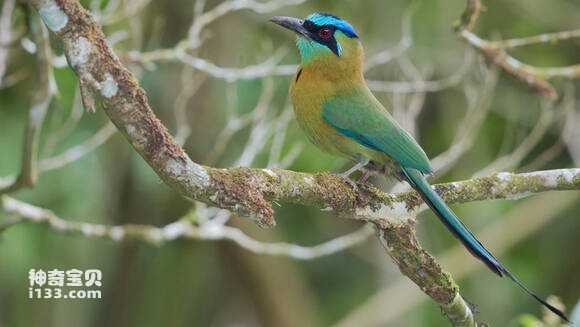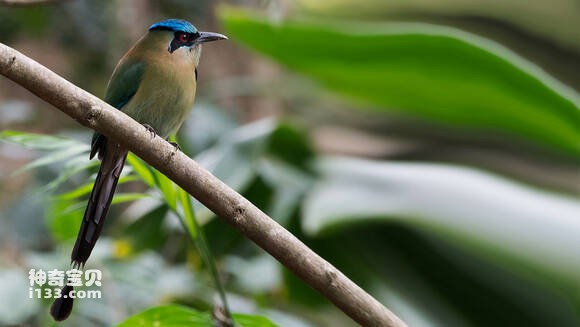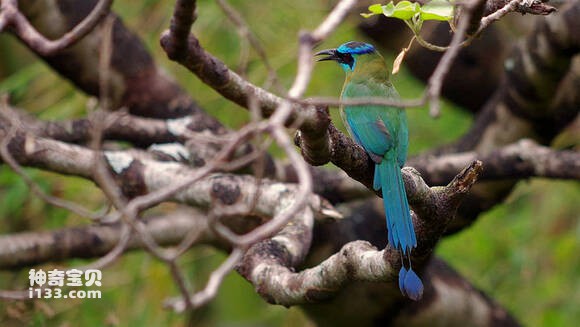Momotus coeruliceps
IUCN
LCBasic Information
Scientific classification
- name:Momotus coeruliceps
- Scientific Name:Momotus coeruliceps,Blue-crowned Motmot
- Outline:Climbing birds
- Family:
Vital signs
- length:About 40 cm
- Weight:No textual research information is available
- lifetime:No textual research information is available
Feature
Distribution and Habitat
It is found in Argentina, Belize, Bolivia, Brazil, Colombia, Costa Rica, Ecuador, El Salvador, French Guiana, Guatemala, Guyana, Honduras, Mexico, Nicaragua, Panama, Paraguay, Peru, Suriname, Trinidad and Tobago, and Venezuela.
It inhabits tropical rainforests, secondary forests, forest edges, shady gardens and shady coffee farms in Central and South America.
Appearance
It is about 40 cm long and has a turquoise crown and black color Like all members of the genus motmot, it has a large head and a short, broad beak that curves slightly downward, with serrated edges. The tarsals are unique, particularly short and almost fully fused to the inner toe and to the middle toe with only one posterior toe. The bases of the two toes facing forward are partially healed. The tail is long, the central tail feathers are long, and there is a section at the near end of the shaft, causing the end to form independent small feathers, forming a racket shape; The sexes are heterochromatic, and the species has plumage of varying shades of green and blue. The iris is red.
Details
The scientific name Momotus momota, Blue-crowned Motmot, has 20。

The hooting owl of the blue-topped turquoise ð«¡ It feeds on insects, crickets, mealworms, worms, earthworms, lizards, various invertebrates and small vertebrates, and sometimes fruit. When waiting for prey, it can calm down for a long time, and once it finds prey, it will suddenly pounce. The tail often swings from side to side or leans on a perch. Blue top Tsui d «¡ will be close to water activities, easy to drink and

Blue top Cuið « » In the water side of the cliff bank, earth embankment, well and mine hole or in the beach with a curved mouth to dig a hole for the nest, the digging time is generally from August to October (at this time is the rainy season, the soil is soft), the bird's nest is a tunnel, 1.5 ~ long In March or April of the following year, the breeding season, they will return to the nest, the female will lay three to four white eggs in the nest, and the parents share the responsibility of incubation and brooding.

The distribution range is very wide and the population trend is stable, so this species is evaluated as having no survival crisis However, due to the expansion of the coffee farm and the destruction of the forest, the survival of this beautiful bird is still threatened.
Listed on the International Union for Conservation of Nature (IUCN) 2012 Red List of Threatened Species ver 3.1 - Low Risk (LC).
Protect wild animals and eliminate wild meat.
Maintaining ecological balance is everyone's responsibility!








